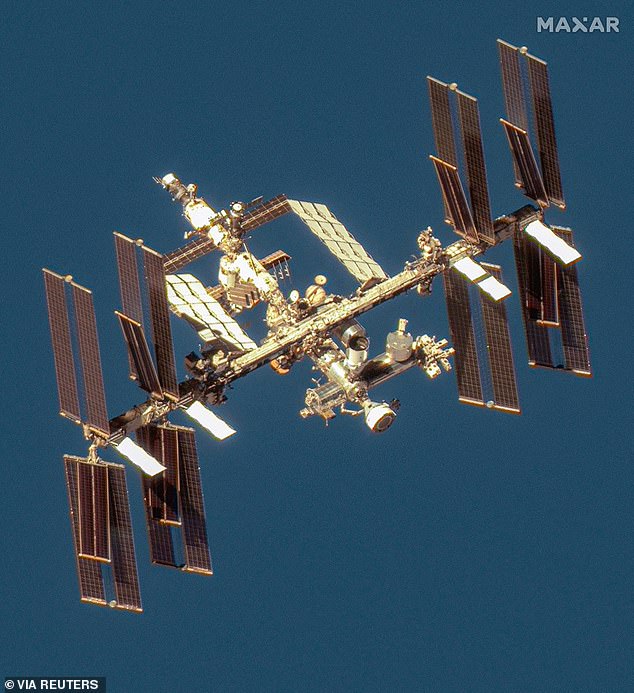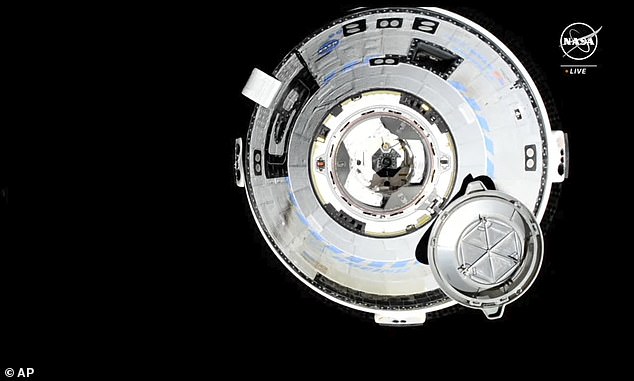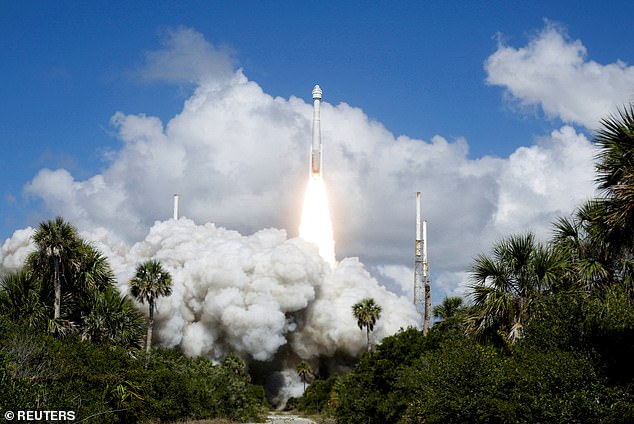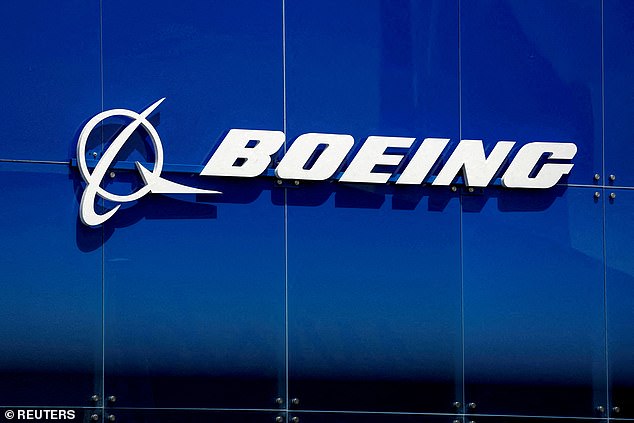Boeing Starliner return date delayed again as NASA races to fix thrusters and plug leaks amid fears its astronauts will be ‘stranded in space’
Boeing’s Starliner spacecraft will be stuck at the International Space Station with two astronauts on board for even longer than expected as the company and NASA work to fix problems with the thrusters and plug helium leaks.
Officials from the aerospace company and NASA announced Tuesday that the spacecraft is now not expected to return until June 26. It was originally scheduled to return on June 14, but was postponed last week to June 22.
Officials say they are spending the extra time investigating five helium leaks in the propeller system, as well as problems with several thrusters used to maneuver the spaceship.
“We’re taking some extra time to work through what we’ve seen and make sure we have all the plans in place to bring the crew home,” NASA program manager Steve Stich said at a news conference on Tuesday, according to the Wall Street Journal.
NASA astronauts Butch Wilmore and Suni Williams will be stuck on the International Space Station for even longer as Boeing and NASA try to fix problems with their spacecraft
But on June 26, astronauts Butch Wilmore and Suni Williams would have spent about 20 days in space – more than double the roughly eight days they had originally planned.
The crew has at least four months’ reserve of food and other consumables, NASA officials said.
According to Stich, Starliner can also return crew members to Earth in an emergency.
But the ship can only stay docked to the ISS for a total of 45 days because of limited fuel in the orbital laboratory, and Mike Leinbach, the former space shuttle launch director at NASA’s Kennedy Space Center, says mission managers won’t do that. allow the spacecraft to return to Earth with astronauts on board if this could pose any risk to them.
“This one still has a few problems that I expected,” he said, according to the Journal.
“We were hoping for a clean flight, but we didn’t get one and we are dealing with it,” he said, reassuring reporters: “They will work it out.”

The crew has enough food rations for at least four months on the International Space Station
But it remains unclear what NASA has planned if the 45 days pass without the problems being resolved, but some experts have suggested it may have to call on Boeing’s rival – Elon Musk’s SpaceX – to rescue the astronauts and return to bring home.
“Good news is that they are on the ISS and not like Apollo 13 trying to get home from the moon,” Rudy Ridolfi, former space system commander and space technology acquisition manager, told DailyMail.com.
“But I wouldn’t be surprised if someone at NASA is preparing a SpaceX Dragon capsule for a rescue mission.”
Mike Gruntman, a professor of aerospace at the University of Southern California, also said that “it is more likely that SpaceX will be able to provide an additional launch to retrieve the astronauts in the near future.”
“It is very unfortunate that Boeing’s Starliner is still experiencing problems after so many flight delays,” Gruntman continued.
“For decades, Boeing was one of the most admired aerospace and defense companies. It’s a real national tragedy.’
He further suggested that the problems facing Starliner may stem from production problems at the scandal-plagued aerospace company.
“Multiple similar problems – helium leaks – with apparently similar components, as reported in the press, indicate a systemic problem with design or workmanship or testing or systems engineering or some combination thereof,” Gruntman explained.

Problems with the Starliner arose before it took off with the astronauts earlier this month

Teams discovered a valve leaking helium in May, and four more just hours after it took off
Boeing and NASA officials first noticed problems with the Starliner before it took off with astronauts earlier this month.
It has suffered years of delays, setbacks and additional costs that have cost Boeing more than $1 billion. CNN reports.
Starliner was next scheduled to launch on May 6, but teams discovered a valve leaking helium and scrubbed the mission.
Engineers suspected the problem stemmed from a defective rubber seal the size of a shirt button, and said that even if the leak worsens, it could be fixed during the flight – with the next launch taking place on June 1.
However, Starliner was again plagued by misfortune when the capsule was automatically stopped by a computer shutdown system minutes before takeoff.
The delay was caused by computers on the Atlas V rocket’s launch pad that coordinate the final moments before liftoff, but the Starliner capsule appeared healthy, officials said.

The Starliner took off from Florida on June 5 atop a United Launch Alliance Altas V rocket
On June 5, it finally launched from Florida atop a United Launch Alliance Altas V rocket.
But just a few hours after the Atlas rocket’s release, NASA revealed that the capsule had caused two more spills.
A fourth leak was found after docking on June 6 and the most recent hit on June 10.
In addition to the helium leaks, five thrusters functioned temporarily during the flight, but four came back online. The fifth was shut down for the remainder of the mission, the Journal reported.
Wilmore and Williams are now conducting several tests on the ship, which they say went well and give the team confidence that the spacecraft will recover.
He and other officials say there is no reason to believe the Starliner won’t be able to take the astronauts home because the helium leaks and thruster problems occurred on a part of the spacecraft not intended to make the journey. home from space to survive. .
Mark Nappi, program manager of Boeing’s Commercial Crew Program, also claims there is “good thrust performance now,” as the company tries to portray the Starliner issues as a learning experience.
It is under contract with NASA to conduct six more crewed flights to the space station.
“It’s more nominal and the (helium) leaks are showing they are stable and less than before,” Nappi said. “That makes us believe we have a good, safe spacecraft.”

Boeing has a contract with NASA to conduct six more crewed flights to the ISS
Boeing executives are now hopeful that a successful return on June 26 could prove its worth to the space agency, after a series of problems with its separate commercial aircraft division.
A Boeing plane experienced a rare Dutch roll at 32,000 feet mid-flight last month, leading to the aircraft being removed from service.
The same month, Singapore Airlines Flight SQ321 experienced fatal ‘turbulence’ associated with proximity to tropical thunderstorms.
And last week, an Air Canada Boeing plane burst into flames seconds after takeoff.
If all goes well in this latest test for the aerospace company, Starliner’s capsule, Calypso, would lift off from the ISS on June 25 at 10:10 PM Eastern Time.
After undocking, Starliner will reenter the atmosphere, with the crew experiencing 3.5G as they decelerate from 28,500 miles per hour to a soft landing with parachute and airbag.
They would then land at White Sands Space Harbor in the southwestern United States on June 26 at around 4:51 a.m. Eastern Time.
